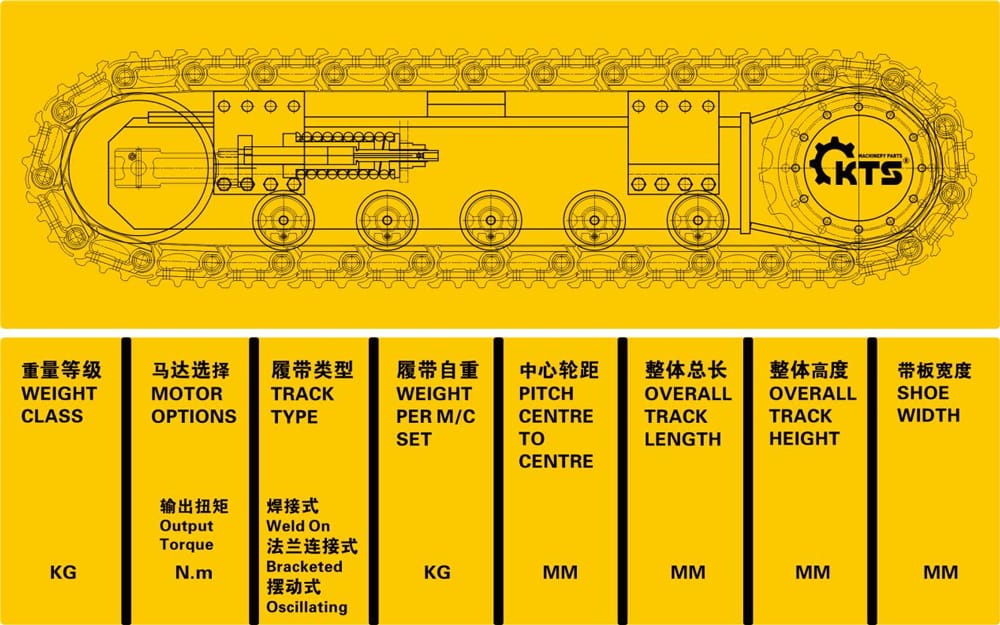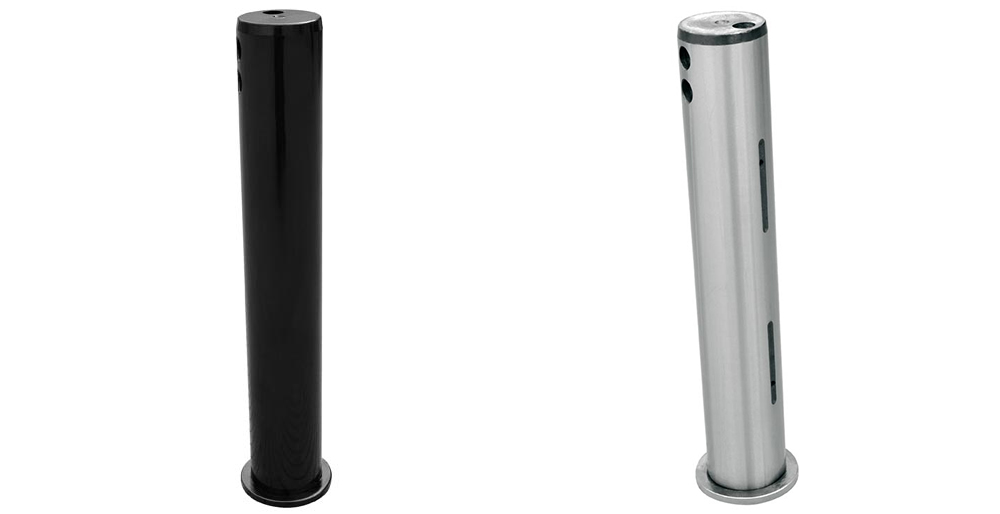Wed June 21, 2023 - National Edition Fortis HD
The mining industry involves the coordinated interaction of huge machinery. The breakdown of a single piece of heavy equipment can affect the whole fleet's productivity, meaning the loss of thousands of dollars per hour. Pin Bucket

Because of this teamwork scheme, we consider preventative maintenance the right approach for mining heavy equipment. Machines will be at peak conditions, maintaining efficiency and minimizing unplanned downtimes and accidents due to breakdowns.
Although preventative maintenance means multiple planned downtimes, it has cost-saving benefits in the long run since operating a machine until failure will affect multiple parts, leading to more servicing, replacements, longer downtime and production loss.
Proactive maintenance for mining is important because, unlike reactive maintenance, it addresses potential failures before they occur.
Operating mining equipment until failure causes random downtimes, and repairs also need more parts and labor, increasing costs. Efficiency will drop because employees will spend time figuring out the cause of the failure and getting the replacement parts.
On top of that, failures increase the possibility of accidents. Take, for example, a 25 ft. wide by 85 ft. long by 33 ft. high mining haul truck with faulty brake discs or a hydraulic mining shovel leaking hydraulic oil with a fully loaded bucket of 34 cubic meters capacity.
Preventative maintenance gets ahead of those scenarios. Seamlessly minor things like daily inspections, lubrication or thoroughly cleaning the machine will help you spot or prevent costly breakdowns. The machine's components will last longer, thus, extending the equipment's useful life.
Because mining equipment lifts and transports heavy loads, in harsh environments, on uneven terrains and for long-hour shifts, they'll wear out quickly.
Schedule regular inspections before shift hour begins. Look for signs of potential failures such as leakages, dents, cracks, fumes or excessive vibration.
For wheeled equipment — haul trucks, loaders, scrapers — check the following:
For tracked equipment — excavators, hydraulic mining shovels, dozers, drill rigs — check the following:
Regardless of the type of undercarriage, during pre-operational inspections, keep an eye on the following:
After identifying potential problems, address them immediately.
Tighten wheel lugs or replace those missing. Get your tires to the proper pressure. Adjust the track tension and replace worn-out parts like the sprocket or rollers. Replace worn-out seals and cracked hoses, and fix or replace damaged hose connections.
Top off the coolant and washer fluid level. Get engine, hydraulic and transmission oil levels to the proper mark. Replace damaged oil filters. Change or carefully blow out clogged air filters.
As important as service or fixing potential problems is to do scheduled maintenance. Some essential maintenance activities to keep mining heavy equipment in top condition are as simple as thoroughly cleaning the machine and applying lubrication to grease points to minimize friction.
Other essential maintenance tasks at specific hour intervals are:
Besides all the above, consider operator training as a maintenance activity. A certified, trained operator knows the importance of regular inspections and scheduled service and will operate the mining equipment properly, minimizing wear, tear and accidents.
If you are a certified mining operator or fleet manager willing to get his hands dirty with oil changes, our 1,000-Hour Maintenance Service of a Komatsu PC200LC Excavator article will be helpful.
So far, you've seen some benefits of preventative maintenance on mining equipment. Let's dive deeper into it.
First, repair costs are lower because you usually fix, change or service a single item. A worn-out or broken part affects others. Thus, you may deal with multiple repairs and replacements.
Take, for example, bucket teeth. Worn-out bucket teeth or cutting edge won't be able to penetrate the soil easily. To solve this problem, the operator must force the hydraulic pump, overstressing the system. The operator could also thrust the equipment forward to help the bucket dig, causing premature wear on the tracks.
Both practices affect other components.
If the operator chooses to force the pump, the seals will wear out faster or fail as pressure increases, causing oil leakages. As oil leaks, the seals can no longer keep debris or dirt from getting in the system, and the boom will lose power.
On the other hand, driving the equipment forward to help the bucket dig affects the tracks' lifespan. The grouser lugs will wear prematurely. A track with low-height lugs will spin under load, wearing out track shoes and forcing the entire drivetrain.
Second, fewer repairs and replacement parts are equal to efficiency. Well-maintained mining equipment will spend more time producing profits and less time generating expenses and possibly idling other machines.
Third, preventative maintenance minimizes accidents associated with machine breakdowns.
Think about the worn-out bucket teeth example in this section. An overstressed hydraulic system leaking oil could cause the boom to lose power and drop its load on other equipment or employees. Likewise, an excavator with low-high lugs could slip on a wet and steep slope, colliding with objects or persons.
Preventative maintenance gets one step ahead of machine failure. Regular inspections, scheduled service and maintenance will extend the life of heavy equipment.
Regardless of the planned downtimes of maintenance activities, the long-term benefits are undeniable: better performance, more efficiency, productivity, profits and fewer breakdowns and accidents.
We encourage you to boost efficiency and maintain a safe mining environment by adopting regular maintenance schedules and practices. Your mining heavy equipment operator manual has all the information you need.
Forget unplanned downtimes with our high-quality aftermarket parts, from tires and rubber tracks to rollers, idlers, and sprockets. Visit Fortis HD and see for yourself our extensive selection of undercarriage replacement parts.
Swift Action Reopens I-10 in Los Angeles After Fire
Allen Butler, Webber Lead 'Top Priority' Amarillo Job
Caterpillar to Amplify Electrification, Energy Solutions at CES 2024
Port Authority NY NJ Proposes $9.3B Budget for 2024 to Fund Several Major Projects
VIDEO: Autonomous Excavator Constructs a Dry-Stone Wall
Alabama Building New $30M EV Training Center to Support Its Auto Industry Growth
Completion of Aiken, S.C.'s Hitchcock Parkway Project Delayed Once Again
World of Concrete 2024 to Feature DEVELON Excavator Trio
Construction Equipment Guide 470 Maryland Drive Fort Washington, PA 19034 800-523-2200
Construction Equipment Guide covers the nation with its four regional newspapers, offering construction and industry news and information along with new and used construction equipment for sale from dealers in your area. Now we extend those services and information to the internet. Making it as easy as possible to find the news and equipment that you need and want.

Digger Teeth Contents Copyrighted 2023, by Construction Equipment Guide, which is a Registered Trademark, registered in the U.S. Patent Office. Registration number 0957323. All rights reserved, nothing may be reprinted or reproduced (including framing) in whole or part without written permission from the publisher. All editorial material, photographs, drawings, letters, and other material will be treated as unconditionally assigned for publication and copyright purposes and are subject to Construction Equipment Guide’s unrestricted right to edit and comment editorially. Contributor articles do not necessarily reflect the policy or opinions of this publication. Read our privacy policy here. Mastodon